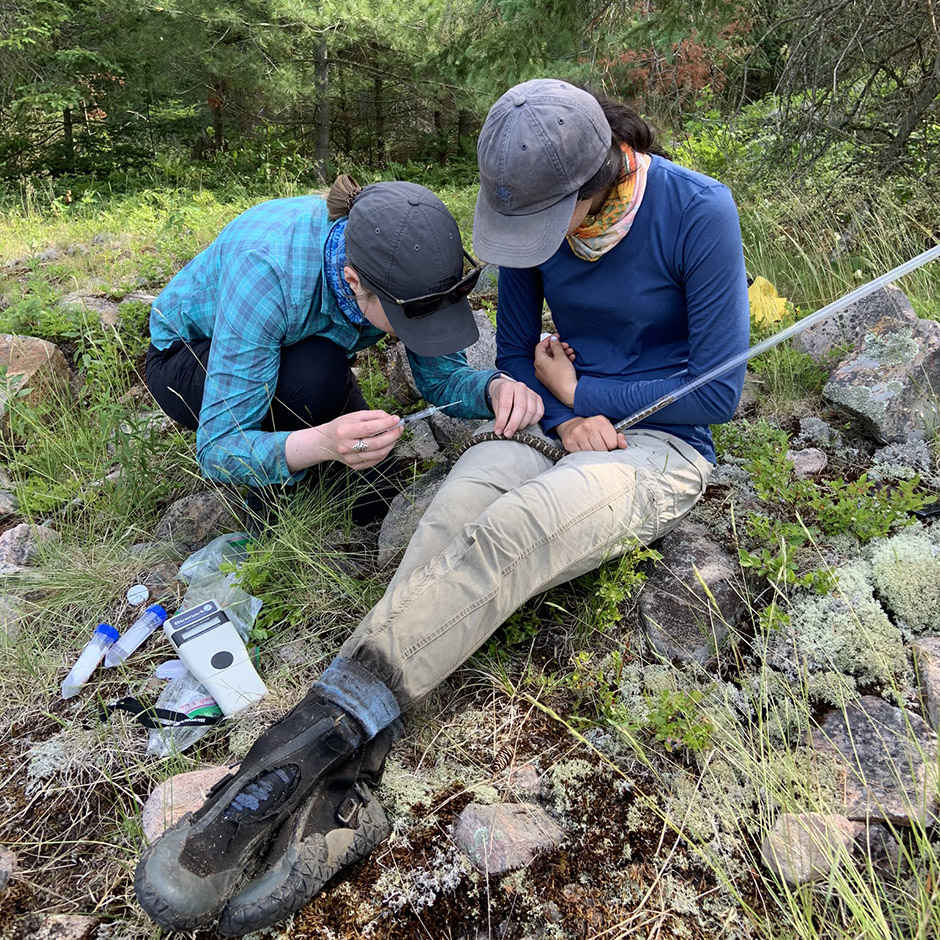The eastern Georgian Bay landscape is a complex mix of geological, ecohydrological, and biological characteristics that combine to form a unique habitat that is a known hotspot for reptilian Species at Risk (SAR). Following construction of the Henvey Inlet Wind Energy Centre (HIWEC) and occurrence of the 2018 eastern Georgian Bay wildfire named Parry Sound 33, Ganawemim Meshkiki (GMI) recommended initiating a long-term monitoring study to observe the succession of ecological communities and reoccupation by reptilian SAR. Blazing Star Environmental was selected to carry out the study, receiving $1,295,496 in EGBI funds and bringing in $1,361,000 in matching support from 2019-2023. Ultimately, the study will assess the long-term response and recovery of target reptilian SAR to the combined impacts of the construction and operation of the HIWEC, the wildfire, as well as climate change. This is an unprecedented post construction impact study that will inform all future wind energy and fire management activities in SAR reptile habitat in Canada. Target SAR reptiles for the project include Massasauga rattlesnake, and Blanding’s turtle as the primary target species, with Eastern foxsnake, Eastern hog-nosed snake, and Eastern musk turtle acting as secondary target species. Four treatment areas of varying levels of impact were chosen to estimate and monitor the population size of the target species over time. Treatment areas include: an area affected by the wind farm construction/operation, an area impacted by the wildfire, an area impacted by the wind farm and the wildfire, and an unimpacted control site.
In 2020, Blazing Star staff as well as survey team members from Laurentian University, McMaster University and two Henvey Inlet First Nations community members carried out a successful field season. Staff advanced the reptile mark-recapture study initiated in 2019, such that ~474 hours of mark-recapture surveys were conducted, and 123 individuals of target SAR were captured and marked during surveys conducted across four treatment areas.
In addition to progressing the reptile mark-recapture study initiated in 2019, several concurrent conservation studies were also initiated, including:
- Assessment of how the ecohydrological function (e.g., water temperature, peat temperature, water level dynamics, etc.) at representative reptile hibernation sites varies among four treatment areas and impacts the created hibernation habitat.
- Assessment of massasauga’s use of sphagnum wetland hibernation habitat created with a novel method.
The two Henvey Inlet First Nation community members conducted a large proportion of the mark-recapture, and vegetation surveys. Additional partnerships and capacity building with community groups in 2020 was slowed by the COVID-19 pandemic but is anticipated to increase as the project continues.
Following completion of the 2020 field season, the following activities were underway to conclude project activities for the year:
- Data management and reporting,
- Habitat mapping (overwintering, nesting, gestation, etc.),
- Calculation of population size estimates for each target species in each treatment area,
- Preliminary assessment of impacts on target SAR,
- Generation of a regional reptile monitoring program by continuing to leverage partner support at other sites across eastern Georgian Bay, and
- Preparations for continued long-term monitoring.



